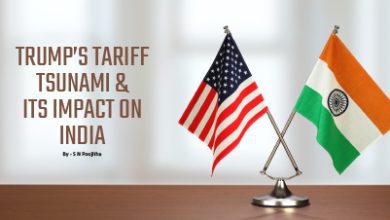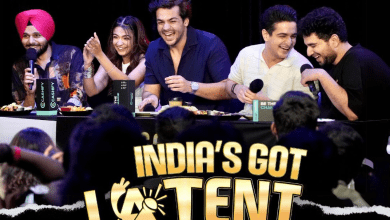NAVIGATING COPYRIGHT INFRINGEMENT IN THE AI ERA

By Khushi Kaul, Legal Intern, Singhania & Co.
1. INTRODUCTION
Modern artificial intelligence (AI) has given rise to sophisticated models like ChatGPT, developed by OpenAI, capable of generating text-based content. However, AI’s role in content creation raises concerns regarding copyright ownership. India’s Copyright Act of 1957 does not explicitly recognize AI as an author. Section 2(d) defines an “author” as the person who causes the work to be created, limiting copyright ownership to humans or legal entities. This legal gap leaves AI-generated content in a gray area regarding protection and ownership.
2. COPYRIGHT PROTECTION OF AI-GENERATED WORK
Under existing copyright laws, the creator is the first owner of a work. Since AI lacks legal personality, determining ownership of AI-generated works is complex. The 1994 amendment to the Copyright Act introduced “computer-generated work,” designating the person who causes the work to be created as the author. However, AI-generated content often lacks the originality and creativity required for copyright protection, as it is derived from pre-existing data.
Assigning liability for AI-generated works is another challenge. If content is created without human intervention, it becomes difficult to identify the true copyright holder. While AI cannot be held liable, responsibility may fall on the developers, users, or companies operating AI systems. Establishing clear frameworks is essential to address liability and ownership concerns.
3. COPYRIGHT INFRINGEMENT BY AI MODELS
A recent lawsuit by The New York Times against Microsoft and OpenAI highlights the issue of AI-driven copyright infringement. The newspaper alleges that OpenAI’s language models were trained on its copyrighted content, including articles and opinion pieces, without permission. This lawsuit questions whether AI-generated content can legally reproduce copyrighted materials and compete with traditional media.
The case centers on whether training AI models on copyrighted content constitutes infringement. It also raises concerns about AI companies profiting from content without compensating original creators. The outcome could set a legal precedent affecting AI copyright laws globally.
4. APPLICABILITY OF FAIR USE DOCTRINE
The fair use doctrine allows limited use of copyrighted material under certain conditions, balancing copyright protection with public access. It considers:
- The purpose of use-educational, non-commercial, or transformative uses are more likely to be deemed fair.
- The nature of the copyrighted work-factual works receive less protection than creative ones.
- The amount and significance of the portion used.
- The effect on the market for the original work.
In the AI context, fair use is crucial in determining whether copyrighted material used for training AI models is permissible. Courts will assess whether AI-generated content transforms original works sufficiently to qualify as fair use.
5. THE GLOBAL PERSPECTIVE ON AI AND COPYRIGHT
The legal debate extends beyond India, as AI development often involves processing copyrighted content globally. Indian copyright law does not explicitly address AI training on copyrighted material. However, existing doctrines like “fair dealing” (for reporting, criticism, and research) might offer some guidance.
The outcome of The New York Times v. OpenAI could influence legal reforms in India and worldwide. Many countries are grappling with the challenge of balancing AI advancement with intellectual property rights. Policymakers may need to amend copyright laws to address AI-specific issues, ensuring fair compensation for content creators while promoting technological growth.
6. POSSIBLE SOLUTIONS
To address AI-related copyright challenges, several solutions can be considered:
- License Agreements: AI companies can establish agreements with content creators, defining terms of use and compensation for using copyrighted materials in AI training.
- Amending Existing Laws: The Copyright Act could be revised to clarify authorship and ownership of AI-generated content.
- Creating New Laws: India could introduce specialized AI-related intellectual property laws to address copyright, patentability, and ethical concerns.
- Issuing Guidelines: Regulatory bodies like the Indian Copyright Office could develop best practices for AI-generated content, offering clarity to businesses and developers.
7. RECENT CONFLICTS AND CASES
Another recent development in AI and copyright law involves the growing concerns over the unauthorized use of creative content by generative AI systems in various sectors, such as art, music, and literature. In 2023, a major lawsuit was filed by several musicians, including authors of songs, against platforms using generative AI for creating music and lyrics without the proper licensing or compensation. The lawsuit accused platforms like Google DeepMind of using copyrighted music for training their AI models without obtaining consent from the original creators. These cases are bringing to light the increasing tension between creators’ rights and the rapidly evolving technologies in generative AI. As these cases progress, it is expected that more countries will look into specific reforms in their intellectual property laws to address the nuances of AI-generated content and ensure that human creators’ rights are respected while balancing the potential for technological growth.
8. CONCLUSION
The absence of clear intellectual property laws for AI-generated content presents significant challenges for businesses and content creators in India. With AI playing a crucial role in economic and creative sectors, India must establish a robust legal framework to address copyright issues effectively.
Legal reforms, international cooperation, and industry guidelines will be essential in balancing innovation with intellectual property rights. Addressing these concerns proactively will ensure India remains competitive in AI development while protecting the rights of content creators. The goal is to foster technological advancement without undermining copyright protections.






